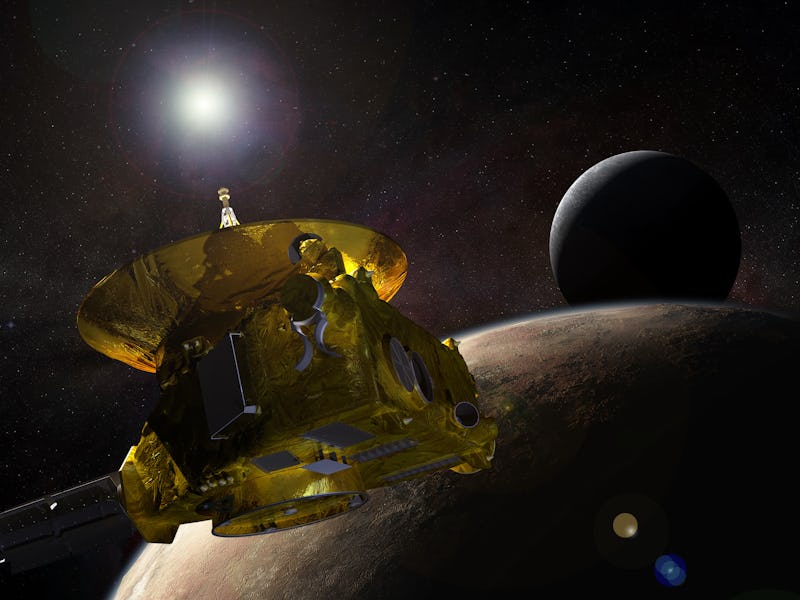NASA’s New Horizons spacecraft, currently speeding off towards the far reaches of the solar system after providing Earthbound scientists with a ton of amazing new data about Pluto, recently captured images of Quaoar, a Kuiper Belt object estimated to be about half the size of Pluto.
New Horizons is currently headed for a fly-by of “2014 MU69,” a Kuiper Belt object beyond Pluto that is more than 40 times farther away from the Sun than Earth. The probe isn’t scheduled to get there until January 1, 2019, but as the snap of Quaoar underscores, there’s plenty more cool science to do along the way.
Quaoar is probably large enough to qualify as a dwarf planet, like Pluto, although it has not been formally classified as such. The space rock actually had a hand in the demotion of Pluto from planet to dwarf planet — Quaoar’s discovery in 2002, among other objects like it, led astronomers to reconsider the definition of a planet.
NASA New Horizons Quoar
New Horizons isn’t exactly close to Quaoar; when the images were taken, the probe was about 1.3 billion miles away. But the position of the spacecraft within the Kuiper belt means that these pictures can give new insights on the object, which to date has only been observed from the perspective of Earth.
From where it sits, New Horizons can only see a portion of Quaoar’s illuminated surface, whereas from Earth nearly all of the visible surface reflects light from the sun. By comparing the photo sets, scientists will be able to learn more about how reflective the surface of the planetoid is, offering potential hints at its composition.
Quaoar appears to move across the series of photos because it is much closer to the spacecraft than the other objects in the frame, including distant stars and galaxies.
